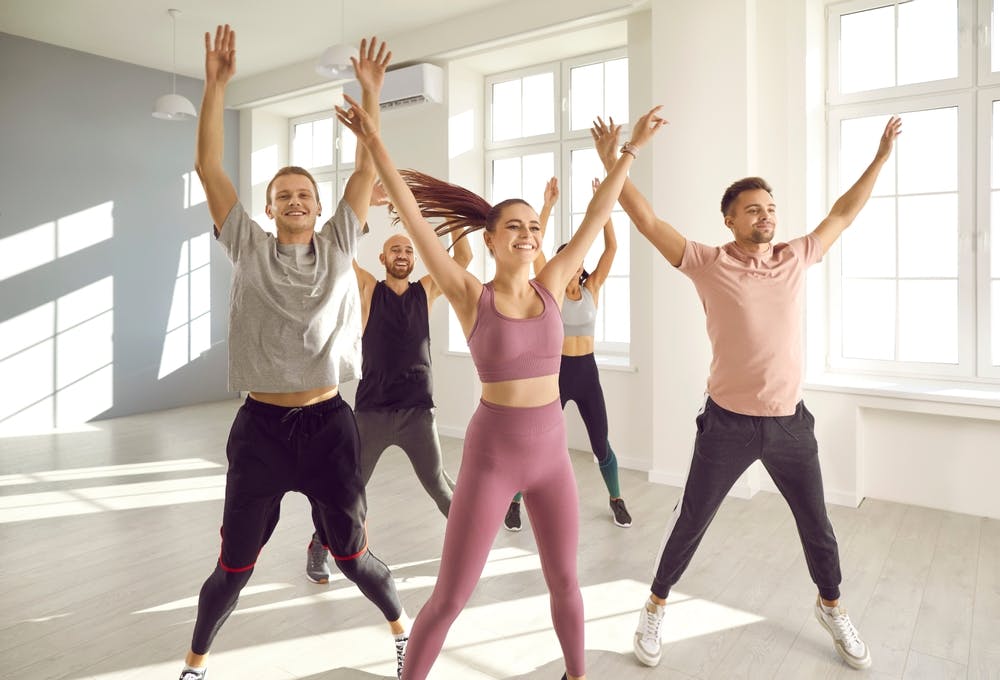15 Surprising Benefits of Jumping Jacks (Backed by Science)
By Lilian E.
Reviewed by Dr. Jossy Onwude, MD
Published Jul 7, 2025
9 min read

Jumping jacks. They seem so simple—something you probably remember from childhood gym class or as a warm-up before sports practice. But what if we told you that this classic move is one of the most powerful full-body exercises you can do without needing a gym, weights, or even much space? Whether you’re trying to get fit, boost your energy, improve your heart health, or simply move more during the day, jumping jacks might just be the underrated hero of your fitness routine.
In this article, we’ll explore fifteen surprising and science-backed benefits of doing jumping jacks, why they work so well, and how you can start adding them to your daily life—no matter your age or fitness level.
What Exactly Are Jumping Jacks?
Before we dive into the benefits, let’s quickly understand what jumping jacks are. At their core, jumping jacks are a type of plyometric exercise—meaning they involve explosive movements that use your body weight to build strength and endurance.
When you do a jumping jack, you start with your feet together and arms at your sides. You then jump to spread your legs out while swinging your arms overhead, then jump again to return to the starting position. It may look easy, but it gets your heart pumping and your muscles working from head to toe.
This simple, rhythmic movement engages your legs, arms, core, shoulders, and cardiovascular system all at once. That’s why jumping jacks are often used in warm-ups, high-intensity workouts, and even as a quick fitness break during the day.
The Health Benefits of Jumping Jacks
1. Jumping Jacks Work Your Whole Body
One of the biggest benefits of jumping jacks is that they activate your entire body in just one movement. Your legs power the jumps, your arms swing up and down, your shoulders stabilize the motion, and your core keeps you balanced. It’s a rare thing to find such a simple movement that lights up so many muscle groups at once.
This makes jumping jacks an ideal option for people who want a quick and efficient workout. You don’t need fancy equipment or a long time—just a few minutes of consistent movement, and your whole body gets a wake-up call.
2. They Boost Your Heart Health
Because jumping jacks get your heart rate up quickly, they’re considered a cardiovascular exercise. When you perform them regularly, your heart becomes stronger and more efficient at pumping blood, which improves circulation and reduces your risk of heart disease.
According to the American Heart Association, even short bursts of aerobic activity like jumping jacks can improve blood pressure, cholesterol levels, and overall heart function. That means just a few minutes a day can make a meaningful difference for your heart.
3. They Improve Balance and Coordination
Jumping jacks may seem mindless, but they actually challenge your coordination. Moving your arms and legs in sync while keeping your core engaged and maintaining balance helps train your brain and nervous system.
For kids, this supports motor development. For adults, especially as we age, better coordination can reduce the risk of falls and injuries. Your brain benefits too, as exercises that require coordinated movement help with cognitive sharpness over time.
4. You Burn Calories—Fast

Jumping jacks are surprisingly effective when it comes to burning calories. Depending on your weight and intensity, you can burn anywhere from 8 to 16 calories per minute doing jumping jacks. That may not sound like much, but it adds up fast—especially if you’re doing them as part of a high-intensity workout.
Incorporating jumping jacks into circuit training or interval workouts can boost fat loss, help maintain a healthy weight, and improve body composition. You don’t need a treadmill to torch calories—just your own body and a few square feet of space.
5. They Help Strengthen Bones and Joints
Every time you land from a jump, your body absorbs impact, which stimulates your bones to get stronger. That’s why jumping jacks—and other weight-bearing movements—are excellent for bone density.
This is particularly important as we age. Women, in particular, are at higher risk for osteoporosis after menopause. Regular movement like jumping jacks can help preserve bone mass and improve joint stability, reducing your risk of fractures later in life.
6. They Relieve Stress and Improve Mood
Feeling tense, anxious, or overwhelmed? Try doing a set of jumping jacks. Like all exercise, jumping jacks stimulate the release of endorphins—your body’s natural “feel-good” chemicals. These help you feel more relaxed, focused, and emotionally balanced.
In fact, even a few minutes of moderate exercise has been shown to reduce levels of cortisol, the stress hormone. That means when you're having a rough day, jumping jacks can be a fast, free, and effective way to lift your mood.
7. They Support Better Lung Capacity
As a cardio exercise, jumping jacks train your lungs as well as your heart. The more you do them, the more efficiently your body learns to use oxygen. This leads to improved lung function, better stamina, and more energy during the day.
If you’ve ever felt winded after going up a flight of stairs, incorporating jumping jacks into your weekly routine could help you build endurance and breathe easier with everyday activities.
8. They Stimulate Your Lymphatic System
One of the lesser-known benefits of jumping jacks is how they support your lymphatic system. This is your body’s natural waste-removal system, which helps clear out toxins, waste, and pathogens from your tissues.
The lymphatic system doesn’t have a pump like the heart does—it relies on movement to keep things flowing. The bouncing motion of jumping jacks helps activate this system, which can improve immunity, reduce bloating, and support detoxification.
9. Your Core Gets a Workout Too
While it might not feel as intense as crunches or planks, jumping jacks engage your core muscles to keep your spine stable and your body balanced. Every time you jump and land, your abs, obliques, and lower back muscles work to keep your torso upright.
Doing jumping jacks regularly can help tone and strengthen your midsection over time—especially when combined with other core-friendly exercises.
10. They Keep Your Metabolism Revved Up
Jumping jacks can give your metabolism a quick boost. This is thanks to something called EPOC—excess post-exercise oxygen consumption. After intense movement, your body continues to burn calories as it returns to its resting state.
Even just a few minutes of jumping jacks can lead to more calorie burn throughout the day. This makes them a great tool for anyone trying to improve their metabolism or manage their weight.
11. You Can Do Them Anywhere
One of the most practical benefits of jumping jacks is that you can do them anywhere. No equipment? No gym? No problem. Whether you’re at home, in a hotel room, at the park, or even taking a break from your desk job, you can knock out a set of jumping jacks in just a few minutes.
They’re especially great for busy people or travelers who don’t have access to a fitness center. All you need is a bit of space and the motivation to get moving.
12. They’re Perfect for Warm-Ups and Injury Prevention
Jumping jacks are often used in warm-ups for a reason. They gently elevate your heart rate, warm up your muscles, and loosen your joints—all of which help prepare your body for more intense activity.
When done correctly, they can also improve joint range of motion and help reduce the risk of strains or injuries during a workout. Think of them as a way to tell your body, “We’re about to get moving!”
13. They Boost Brain Function
Believe it or not, jumping jacks are also good for your brain. The increased blood flow and oxygen delivery that comes from cardio exercise help stimulate brain function, including memory, focus, and creativity.
Exercise that involves coordination—like moving your arms and legs in rhythm—also improves neuroplasticity, which is your brain’s ability to adapt and grow. This makes jumping jacks a great brain boost for students, professionals, or anyone looking to stay mentally sharp.
14. They Can Be Social or Solo
Jumping jacks are flexible—they can be part of a solo workout at home, or something you do with a group. You can incorporate them into a group class, a family fitness session, or even a virtual challenge with friends.
The movement is simple and accessible enough for almost anyone, making it a fun way to stay connected through fitness—especially if you want to add a little fun to your routine.
15. They Help Keep You Mobile as You Age
Staying mobile is one of the most important things we can do as we get older. Regular movement helps keep our muscles strong, our joints limber, and our balance intact. Jumping jacks, when modified to suit your fitness level, can be part of a lifelong movement routine.
Even if the jumping becomes too intense, there are low-impact versions that keep you moving without strain. This makes jumping jacks a surprisingly powerful anti-aging tool.
How Many Jumping Jacks Should You Do Each Day?
The answer depends on your goals and fitness level. If you’re just starting out, try doing three sets of 20 to 30 jumping jacks with rest in between. As you build stamina, you can increase to 100 or more per day, or incorporate them into interval-style workouts (like 30 seconds on, 30 seconds off).
For heart health and calorie burn, aim for at least 10 minutes of jumping jacks per day, broken up into 2-minute sessions if needed. The key is consistency—doing something small every day is more powerful than a long workout once in a while.
Are Jumping Jacks Safe for Everyone?
For most people, jumping jacks are very safe. But if you have knee, hip, or ankle issues, high-impact jumping might not be ideal. In that case, try low-impact variations like stepping one foot out at a time while swinging your arms—this still gets your heart rate up without the jump.
Pregnant women, those with joint problems, or anyone recovering from an injury should check with a healthcare provider or physical therapist before starting any new workout routine.
How to Add Jumping Jacks to Your Day
You don’t need to carve out a full workout to enjoy the benefits of jumping jacks. Try doing a short set every few hours to stay energized. Use them as a warm-up before strength training or yoga. Or mix them into a full-body HIIT routine for maximum fat burn.
Even just 2–5 minutes of jumping jacks can help break up long periods of sitting, refresh your mind, and get your blood flowing.
Final Thoughts: Why You Shouldn’t Underestimate This Classic Move
Jumping jacks may seem basic, but their benefits are anything but. They’re simple, free, and shockingly effective for improving your fitness, metabolism, heart health, and even mental well-being. And perhaps best of all, anyone can do them—anywhere, anytime.
If you’re looking for a no-fuss way to move your body more, jumping jacks are an excellent place to start. Just lace up your shoes, find a little space, and start jumping. Your body (and your brain) will thank you.
Share this article

Tips for Staying Healthy: 12 Simple Habits for Energy, Longevity, and Better Living
Editorial Team
Sep 30, 202510 min read

Is Eating Before Bed Bad? What Science Really Says About Late-Night Snacking
Editorial Team
Sep 25, 202512 min read

Low Sodium Diet: Simple Guidelines, Food Lists, and Tips for Better Health
Lilian E.
Sep 30, 202512 min read

Best-in-class care is a click away
Find everything and everyone you need to reach your metabolic health goals, in one place. It all makes sense with Meto.
Join Meto